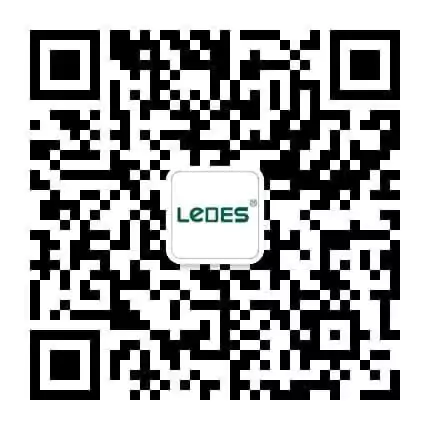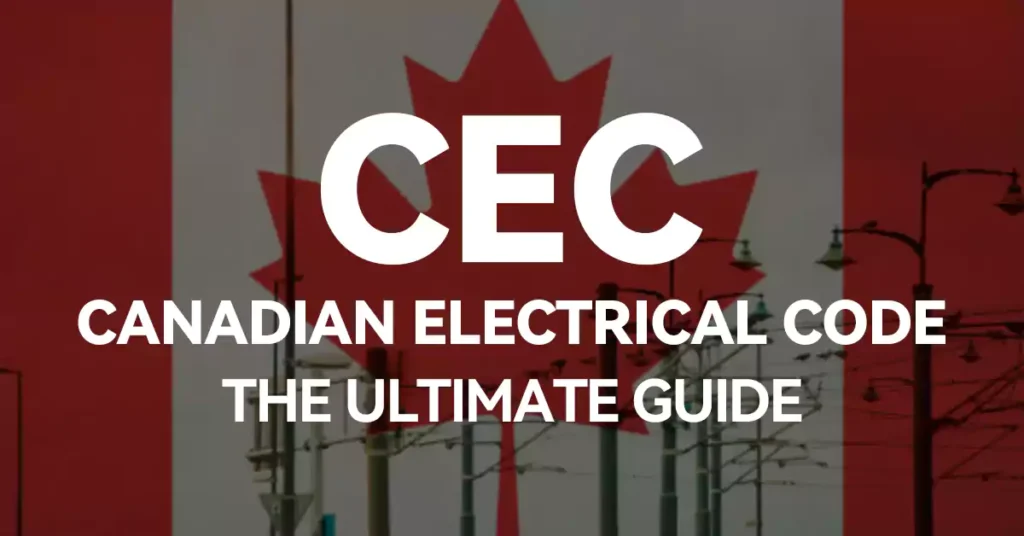
目录
电气安全是现代基础设施的基石,确保住宅、企业和工业免受危害。每年,电气故障导致加拿大各地发生超过1400起火灾,造成1400多亿加元的财产损失。这些令人担忧的数字凸显了严格安全法规的重要性——而加拿大电气规范 (CEC) 正是这项工作的先锋。
CEC 不仅仅是一份监管文件,更是一份不断发展的标准,它会随着技术进步、安全创新和新兴风险的出现而不断发展。从住宅项目的布线方法到工业设施的电气安装,CEC 都是安全、合规、可靠的电气系统的基础。
本指南为何重要
对于电气行业的专业人士来说,理解 CEC 规范可能非常复杂。该规范反映了电气技术、可再生能源整合以及安全标准的提升。及时了解这些更新对于以下方面至关重要:
- 确保遵守法律和安全要求
• 避免代价高昂的错误和项目延误
• 提高电气系统的安全性
• 提高电气设计和安装效率
本终极指南旨在分解 CEC 的关键方面,使其更易于理解和应用。无论您是经验丰富的电工还是电气安装新手,本指南都能清晰地讲解 CEC 的结构、要求以及在实际场景中的应用。
什么是加拿大电气规范 (CEC)?
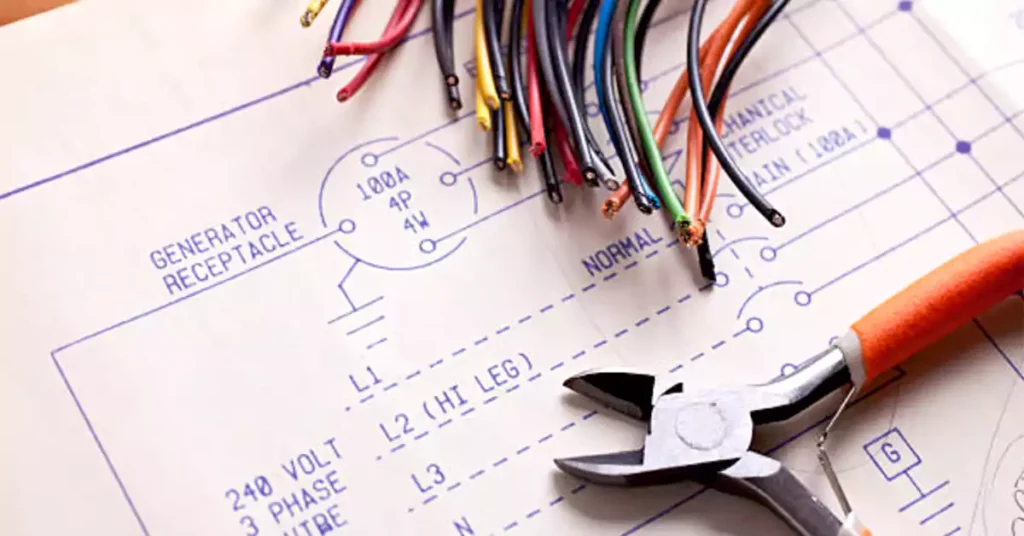
加拿大电气规范 (CEC),也称为 CE 规范或 CSA C22.1,是由加拿大标准协会 (CSA 集团) 发布的一项国家标准。该规范规范加拿大各地电气设备的安装和维护,确保安全、高效并符合现代电气规范。
加拿大电气委员会 (CEC) 是加拿大电线法规的基础,它提供了一个规范性的模型,详细列出了可接受的电线布线方法。虽然该规范允许采用其他安全安装方法,但这些方法必须获得当地执法机构的批准。
CEC 的历史与演变
近一个世纪以来,加拿大电气规范 (CEC) 一直是加拿大电气安全框架的重要组成部分。CEC 于 1927加拿大电气委员会(CEC)的成立旨在在全国范围内建立统一的电气安全标准。几十年来,随着电气技术的进步,CEC 也不断发展,不断适应新的挑战、创新和监管要求。
加拿大标准协会(CSA集团)是一家独立的非营利组织,负责开发和维护CEC。CSA更新了代码 每三年,确保它反映新出现的安全问题、电气工程的进步以及不断发展的行业需求。
几十年来,每个版本都为更安全的安装和降低与电气工作相关的风险做出了贡献。
- 1927: CEC 第一版发布,为安全电气实践奠定了基础。
- 20世纪中期: 我们进行了多次修改,以融入不断发展的技术和更好的实践。
- 2024: 最新版本——第 26 版,发布于 2024,包括反映最新电气安全技术和实践的重要更新,包括接线方法的变化和新设备的更新标准。
CEC 的制定是来自行业、政府机构和电气安全组织的志愿者共同努力的结果。几十年来,该规范不断扩展,以应对新的挑战,包括:
- 接地和接合方面的进步 提高电气安全
- 电弧故障和接地故障保护 减轻电气火灾危险
- 能源效率要求 用于现代电气系统
- 可再生能源整合指南包括太阳能和电动汽车(EV)充电基础设施
该规范不断发展,以适应日益复杂的电力系统和可持续能源解决方案。
管理机构:谁来监管 CEC?
虽然 CSA 集团负责发布和维护 CEC,但加拿大各省和地区都独立采用和执行该准则,并且通常会对特定地区进行修订。
省和地区收养
电气安全由省级和地区级机构监管。部分地区可能:
- 立即实施最新的 CEC 版本。
- 根据当地需求引入行政或技术修正案。
- 根据略微修改后的 CEC 版本进行操作,以符合特定省份的要求。
例如:
- 魁北克遵循《魁北克建筑规范》第五章 – 电力,该规范与 CEC 非常相似,但包括省级修改。
- 安大略省和不列颠哥伦比亚省可能会采取额外的防火和安全措施。
符合国家建筑规范
加拿大电气委员会 (CEC) 与加拿大国家建筑规范 (NBC) 协同工作。NBC 涵盖结构、防火和能源效率要求,而 CEC 则确保所有电气装置符合严格的安全和性能标准。这种协同有助于构建一个统一的国家电气和建筑安全框架。
对行业安全的影响
CEC 在减少加拿大各地的电气危害方面发挥了至关重要的作用,具体如下:
- 标准化布线和接地实践以防止故障。
- 需要先进的保护机制(例如电弧故障和接地故障断路器)。
- 加强电气设备监管,确保安全性和耐用性。
- 解决电动汽车充电站和可再生能源等新兴技术。
通过严格遵守 CEC,电工、承包商和工程师为世界上最安全的电力基础设施之一做出了贡献。
每位专业人士都必须了解的 CEC 关键部分
CEC 零件概述
加拿大电气规范 (CEC) 分为多个部分,以满足电气安装的各种要求。其中某些章节与电线和导管应用特别相关。
第一部分:电气装置安全标准
本节规定了电气设备安全安装、操作和维护的基本准则。它包括对接线方法、接地、过流保护和安全协议的全面要求,以确保符合国家电气安全标准。
第二部分和第三部分:产品特定标准和专用设备指南
这些部分涵盖电气产品和专业安装的详细技术规格。它们为电气标志、工业机械和危险区域布线等特定应用提供指导,确保产品符合安全和性能标准。
CSA C22.1:24 的关键章节
CEC 中的几个部分专门关注住宅、商业和工业应用的电线、导管和安装实践:
第 12 节:布线方法和线槽
本节提供了不同类型的导管和线槽的详细要求,包括:
- 导管安装 – 不同类型的安装场景,如地下安装、静压箱布线、架空地板下布线等。(注:了解更多关于 电气导管安装技巧 (这是我们最后一篇文章)
- 线路槽 – 指定线路槽,包括根据环境条件使用 PVC、金属和防水导管。以及用于支撑线路的电缆桥架。
第 18-24 节:商业和工业布线
这些部分概述了具有挑战性的环境的关键安装要求,包括:
- 危险场所(第 18 节) – 爆炸性环境分类和防止点火的导管密封要求。
- 汽油分配和服务站(第 20 节) – 燃料处理区域的布线方法,强调耐腐蚀导管材料。
- 工业设施(第22节) – 在有腐蚀性液体、蒸汽和过多水分的区域安装电气装置。
- 病人护理区(第 24 节) – 医院和医疗机构电气系统的特殊接地和隔离要求。
第 64 节:可再生能源系统
随着可再生能源应用的增长,本节提供了以下方面的基本指导:
- 太阳能光伏(PV)装置 – 屋顶和地面安装太阳能电池板的布线和导管要求。
- 风能系统 – 风力涡轮机装置中电线管道的安全布线。
- 电池存储系统 – 将能源存储解决方案与电力基础设施相结合的合规标准。
这些章节确保电气专业人员在安装安全、可靠且符合规范的电线和导管系统时遵守 CEC 标准。在以下章节中,我们将详细探讨每个主题。
深入了解 CEC 代码的关键部分
CEC 规范规定了与电气相关的所有方面的要求,这里我们将仅介绍一些与电线、管道槽和安装相关的重要信息。
布线方法和线槽(第 12 节):
加拿大电气规范 (CEC) 第 12 条概述了确保电气安装安全可靠的布线方法的一般要求。这些要求涵盖各种布线系统的选择、安装和支持。
接线方法的一般要求:
导体绝缘:
导体必须具有适合系统电压和安装特定环境条件的绝缘。例如,非接地或阻抗接地系统中使用的导体应符合特定的绝缘厚度要求,以确保安全。
防止机械伤害:
应选择并安装合适的布线方法,以保护导体免受机械损坏。这包括在导体可能暴露于潜在损害的区域使用合适的线槽或导管。
支持和安全:
导体和线槽必须按照规范规定的间隔牢固固定和支撑,以防止下垂、物理损坏或端接处过度拉力。
间距:
在电缆槽中安装导线、导管或电缆时,必须根据相邻导线的尺寸保持适当的间距。这可确保充足的通风并降低过热风险。
地下安装要求
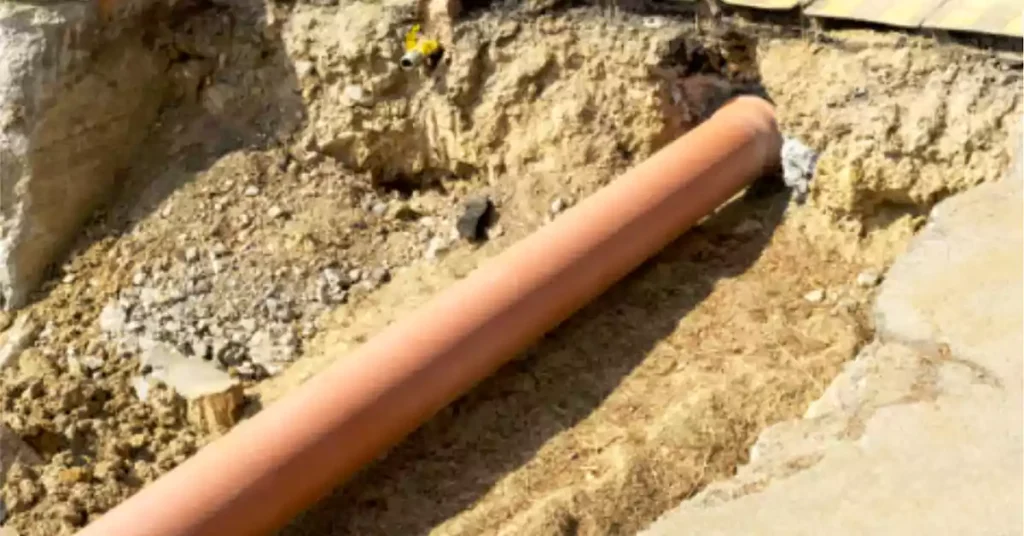
CEC 中介绍了多种布线方法,其中一种是我们经常使用的地下安装。以下是这种安装方法的一些关键要求:
- 最低保险要求:
直埋电缆或管道必须符合 CEC 表 53 中规定的最小覆盖深度。这些深度取决于所采用的布线方法和具体的安装条件等因素。
- 载流量考虑因素:
当导线和电缆从地下设施过渡到地上设施并端接于电气设备时,其载流量必须根据表 1-4 中 75°C 列确定。这确保符合 CEC 的规定。
- 分离要求:
规则 12-012 规定了管道内电缆或导体地下安装的具体间隔要求。该规则确保安装过程中保持足够的间距,以防止潜在危险。
- 地下设施的标记:
所有地下线路装置必须有充分的标记,以指示其存在。常见的做法包括在沟槽内电线上方一半的位置埋设电气警示标记带,或使用永久性地上标记,例如印刷标志。
特定类型导管的要求:
使用和限制: 硬质PVC导管适用于各种安装,例如露天作业、地上和地下作业。但它在CEC中有一些特定的限制,例如必须安装在隔热材料内。
温度限制: PVC 导管不得承受超过 75°C 的温度,以保持其结构完整性。
导体数量: CEC 规则 12-1120 规定了 PVC 导管内允许的最大导体数量,以防止过热并确保安全。
配件和支持: 必须使用合适的配件,以确保安装安全可靠。CEC 还规定了导管支架的最大间距,以保持机械稳定性。
粘合: 指定了接地连续性规定,以确保整个安装过程中的电气安全。
使用和限制: 这些导管类型设计用于地下安装,其中 DB2/ES2 适合直接埋设,EB1 适合埋入混凝土中。
温度限制: CEC 规定了温度限制,以确保这些导管正常运行且不会出现性能下降。
机械保护: 概述了机械保护要求,以保护导管免受物理损坏。导管应具有足够的抗冲击、抗拉伸、抗挤压等机械强度。
安装方法: 规则 12-1162 规定了安装这些直接埋地导管类型的方法,以及如何与接头、弯头、适配器等配件一起完成安装。
高密度聚乙烯 (HDPE) 导管:
使用和限制: HDPE 导管适用于特定应用,特别是在灵活性和耐腐蚀性具有优势的地下设施中。
温度限制: CEC 概述了 HDPE 导管的温度限制,以确保它们在各种条件下安全运行。
安装方法: 规则 12-1254 规定了具体的安装方法,以保持 HDPE 导管系统的完整性和安全性。
用途: 符合规则 12-012 规定的地下、暴露或隐蔽位置允许使用非金属电气管。但除非有机械保护措施,否则不应在易受损坏的位置使用。
温度限制: ENT 设计可承受特定温度范围。安装人员必须确保环境温度不超过管道额定容量 75°C,以保持其结构完整性和安全性。
支持和安全: ENT 必须牢固支撑,并用绑带每隔一段距离固定。此外,每个出线盒、接线盒、设备箱、机柜或配件均应在 1 米范围内放置支撑,以防止下垂并保持对齐。支撑之间的间距不应超过 1 米。
导体数量: ENT 内安装的导体数量不得超过 CEC 规则 12-910 中规定的填充容量。该规则规定了可安全安装的各种尺寸导体的最大数量,以防止过热并确保安装的便利性。
配件和连接: 仅应使用专为 ENT 设计并列明的配件。这些配件可确保正确连接并维护线槽系统的完整性。应使用溶剂型胶粘剂或其他经批准的方法连接配件,以确保导线路径安全连续。
商业和工业系统(第 18-24 节):
加拿大电气规范 (CEC) 第 18-24 节 CSA C22.1:21 提供了确保商业和工业环境中电气装置安全性和功能性的重要指南。这些章节涵盖了与危险场所、易燃液体处理、腐蚀性物质环境以及患者护理区域相关的重要方面。
关键信息和要求包括:
危险场所(第 18 节):
危险场所分类: 定义 I 类(易燃气体或蒸汽)、II 类(可燃粉尘)和 III 类(易燃纤维或飞散物)位置。
接线方法: 需要防爆外壳、密封导管系统和本质安全电路来防止点火。
温度限制: 指定电气设备的最高表面温度,以避免在爆炸性环境中着火。
接合和接地: 对于防止静电放电和控制电位差至关重要。
易燃液体处理和储存设施(第 20 节):
加油站、散装存储厂、服务站、车库、精加工工序和飞机库的电气系统指南。
服务站、车库、散装存储厂和飞机库: 强制使用密封管道系统和防爆照明和设备。
通风和控制系统: 需要适当的通风和紧急关闭系统以防止火灾和爆炸危险。
接地和接合: 确保储罐、管道和电气设备正确接地,以防止静电放电。
腐蚀性和易受潮环境(第 22 节):
保护暴露于腐蚀性液体、蒸汽和高湿环境中的电气系统。这包括使用耐腐蚀材料、密封系统以防止湿气侵入,以及确保正确接地和连接。
材料选择: 需要使用耐腐蚀导管(例如 PVC 硬质导管、HDPE 导管和非金属管)和外壳。
密封和绝缘: 防止湿气通过密封配件和接线盒进入。
支持和联系: 指定适当的导管支撑间距和粘合以确保电气连续性并防止损坏。
病人护理区(第 24 区):
对医疗机构电气装置的特殊要求,以确保患者和医疗设备的安全。
隔离电源系统: 通过隔离电路和监控接地故障来降低触电风险。
冗余接地和设备连接: 确保对敏感医疗设备的持续保护。
医院级设备的使用: 指定医院级插座、接线方法和电磁干扰保护。
通过遵守这些准则,商业和工业设施可以降低与危险材料、易燃环境、腐蚀性条件和敏感医疗区域相关的风险。遵守这些条款对于保障人员、设备和基础设施的安全,同时满足监管标准并提高整体安全性至关重要。
可再生能源系统(第 64 节):
加拿大电气规范 (CEC) 第 64 条 CSA C22.1:24 规定了可再生能源系统、能源生产系统和储能系统的安全安装和运行要求。本条款对于确保电气安全、高效且符合现代能源技术至关重要。
关键信息和要求:
- 可再生能源系统:
太阳能光伏 (PV) 系统、风力涡轮机和水力系统: 正确的接线方法、接地以及过流和故障情况保护的指南。
逆变器和电源调节设备: 与公用电力和并网系统安全集成的要求。
断开方式和安全控制: 确保在维护或紧急情况下隔离可再生能源的能力。
- 能源生产系统:
分布式发电系统: 小型发电和微电网的规定。
连接至公用电网: 与电网的互连、计量和同步标准。
防止反馈和故障电流: 防止与逆电流和系统不稳定有关的危险。
- 储能系统(ESS):
电池存储系统 (锂离子、铅酸和液流电池):安全处理、通风和热管理的安装要求。
逆变器和充电控制器兼容性: 确保正确的充电和放电控制。
紧急关闭和消防: 提供防止热失控并确保危急情况下安全关闭的措施。
其他关键因素:
- 接地和接合要求: 防止触电并确保系统稳定性。
- 过压和过流保护: 保护电气系统和连接设备。
- 检查和维护协议: 定期检查和监控以确保长期性能和合规性。
遵守第 64 条对于支持向清洁能源转型同时维护电力系统的安全性和可靠性至关重要。
加拿大各司法管辖区的合规与执法
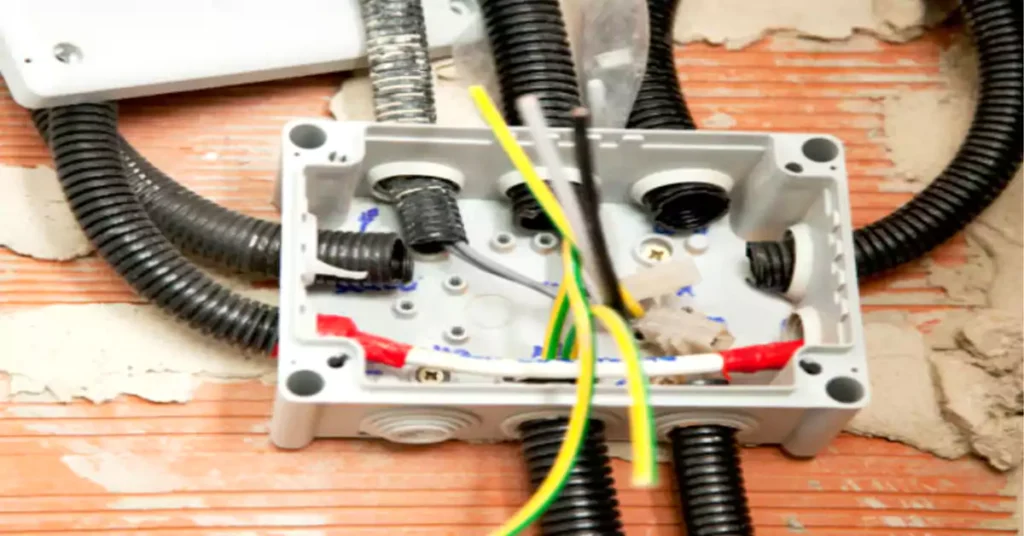
确保加拿大全国的电气安全,依赖于《加拿大电气规范》(CEC)的有效采用和执行。CEC 提供了一个全国性的框架,但各省和地区会根据当地需求和情况,制定相应的实施方案。
A. 省级和地区收养
CEC 是由加拿大标准协会 (CSA) 制定的一项自愿性标准,旨在供监管机构采用。各省和地区自行决定如何将 CEC 纳入其法规,通常会根据地区要求进行具体修订。
- 安大略省: 安大略省电气安全规范 (OESC) 吸收了 CEC 的一些修改,以解决当地的安全问题和环境条件。
- 阿尔伯塔省: 阿尔伯塔省市政事务部采用 CEC,并可能对其进行补充,以满足该省独特的工业和住宅需求。
这些调整确保了 CEC 在提供共同安全基线的同时,每个地区可以在必要时实施额外措施。
B. 监管执法
CEC 的执行由各省和地区的地方检查机构和监管机构负责。他们的职责包括:
- 检查: 进行定期评估以验证是否遵守本准则。
- 允许: 确保电气装置在工作开始前获得必要的许可证。
- 修正案执行: 实施和监督当地修正案以应对区域安全挑战。
监管机构积极参与 CEC 的制定,其代表来自各省和地区以及温尼伯、卡尔加里和温哥华等主要城市,并参与了加拿大电气规范第一部分委员会的制定。
C. 采用差异
不同司法管辖区采用 CEC 的时间和版本可能有所不同。例如,截至 2021 年 12 月,阿尔伯塔省已采用 2021 年版 CEC,该版本于 2022 年 2 月 1 日生效;而不列颠哥伦比亚省则于 2022 年 10 月 1 日采用。
D. 专家见解
行业专家强调,CEC 的区域化调整对于应对本地挑战至关重要。将严格的国家标准与区域修订相结合,可以实现既安全又符合本地需求的安装。
案例研究
在安大略省,加拿大电气规范 (CEC) 与各省修订法规的整合,确保电气装置符合国家和地方安全标准。一个显著的例子是安大略省电气安全规范 (OESC) 的严格执行,该规范在 CEC 的基础上进行了具体修订,以适应不同地区的具体情况。
虽然目前还没有关于在多单元住宅建筑中实施 OESC 的具体案例研究,但电气安全局 (ESA) 强调了主动维护和遵守更新规范的重要性,以防止老化的多单元住宅建筑出现系统故障。
总之,虽然 CEC 为电气安全提供了国家框架,但其有效实施依赖于省和地区当局调整和执行该规范以满足当地条件和要求。
导航 CEC 合规性:分步指南
要完全符合加拿大电气规范 (CEC),不仅需要遵守国家标准,还需要了解各省和地区的独特要求。通过整合 CEC 的关键条款(例如线路保护、危险场所、防火和安装标准),电工和承包商可以确保电气安装安全且符合规范。以下是一份实用的四步指南:
第一步:了解省级修正案
由于CEC是国家标准,各省和地区可以灵活地实施各自的修订,以满足当地的安全和环境需求。了解这些地区差异对于合规至关重要:
安大略省: 电气安全局 (ESA) 要求所有卧室电路必须配备 AFCI(电弧故障断路器)保护,以防止电气火灾。
魁北克: 魁北克建筑管理局 (RBQ) 强制对电气面板进行双语标注,以确保法语和英语使用者的安全。
不列颠哥伦比亚省: 承包商必须在最终检查之前向不列颠哥伦比亚省技术安全局提交“合规声明”表格。
第12节(接线方法)和第26节(电气设备安装)规定了正确的AFCI保护和标签规范。遵循这些准则不仅符合当地修订规定,还能增强防火和接线保护。
第 2 步:进行风险评估和检查
全面的风险评估有助于在安装前识别潜在的违规行为。使用现代合规工具可以简化此流程:
- CSA 的“CEC 快速检查”应用程序 使承包商能够快速识别代码漏洞和潜在危险。
- 评估危险场所: CEC 的第 18 和 20 条等条款为在存在爆炸性气体或易燃液体的区域进行安装提供了指导原则。对这些区域进行正确分类对于降低风险至关重要。
- 防火标准 (CEC 第 22 节):对于暴露于可燃纤维或灰尘的区域,选择合适的导管和设备可防止过热和火花。
- 评估接线方法: 第 12 节概述了可接受的接线方法,确保安装符合安全标准并适合特定环境。
案例研究: 温尼伯一家医院通过聘请第三方检查员进行预先批准检查,在最终安装之前发现危险区域的不合规问题,成功地将返工成本降低了 30%。
步骤3:向当地政府进行认证
妥善的文件和认证对于证明符合CEC规定至关重要。每个省都有具体的要求:
在不列颠哥伦比亚省,承包商必须向不列颠哥伦比亚省技术安全局提交“合规声明”表格。
在安大略省,任何装置通电之前都必须获得 ESA 检查报告。
Section 24 (Patient Care Areas) ensures electrical safety in healthcare facilities, while Section 32 covers installations in emergency systems, such as fire alarms and exit lighting.
Step 4: Leverage Educational Resources and Training
Staying updated with the latest CEC revisions and best practices is essential for long-term compliance:
ESA’s “Code Coach” Webinars provide expert guidance on common compliance mistakes.
CSA’s CEC Handbook offers detailed commentary from code drafters and practical installation tips.
Online Training Portals: Access to training modules and certification programs keeps professionals updated on code changes and best practices.
Expert Tip from an Electrical Engineer:
“A common compliance pitfall is improper cable protection in high-vibration environments or wet locations. By following CEC Section 12 for conduit selection and Section 18 for hazardous location installation, contractors can avoid costly rework and safety risks.”
By following this structured 4-step approach and integrating key CEC sections, electrical professionals can ensure compliance with both national standards and provincial amendments. This not only enhances safety in wiring protection, hazardous environments, and fire prevention but also reduces installation errors and project delays.
2024 CEC Updates: What's New?
The Canadian Electrical Code (CEC) undergoes regular revisions to address emerging technologies, enhance safety protocols, and improve clarity in electrical installations. The 2024 edition introduces several notable changes that professionals in the electrical industry should be aware of.
Renewable and Energy Storage Systems
Lithium Battery Integration: The previous restrictions on lithium battery usage in residential energy storage systems have been lifted, allowing for more flexible and efficient energy solutions.
Photovoltaic Systems: New rapid shutdown requirements have been implemented for photovoltaic installations to enhance firefighter safety during emergencies.
Improved Safety for Pools, Tubs, and Spas
Bonding Requirements: Revisions aim to mitigate voltage gradients around pools and portable hot tubs, reducing the risk of electric shock.
断开方式: Enhanced guidelines have been introduced to improve maintenance safety for these installations.
医疗保健设施
Tamper-Resistant Receptacles: The code now mandates the use of tamper-resistant receptacles in areas designated for child care and diagnostics to enhance patient safety.
Wiring Methods
Non-Metallic Jacketed Cables: A new subsection addresses requirements for non-metallic jacketed cables, such as TC and LVT types, detailing guidelines for their support and bonding.
Overhead Installations: There are updated rules concerning cable supports, bonding conductors, and span limits to ensure structural integrity and safety.
Conductors
AWG and IEC Metric Alignment: A new table aligns American Wire Gauge (AWG) sizes with International Electrotechnical Commission (IEC) metric sizes, simplifying conductor selection.
Voltage Drop Calculations: The methodology for calculating voltage drops has been revised to ensure more accurate conductor sizing, promoting efficiency and safety.
Bonding and Grounding
Simplified Grounding Criteria: The code introduces simplified criteria for grounding alternating current (AC) systems, reintroduces isolated bonding conductors, and clarifies bonding requirements for non-electrical equipment like gas piping.
Electric Vehicles (EVs)
Load Calculations: Clarifications have been made regarding load calculations when using EV energy management systems, facilitating the integration of EV infrastructure.
尖端: If you would like to compare with NEC code for EV charging infrastructure, you can read our last post for NEC Code Compliance for EV Charging.
Case Study: A Toronto Contractor's Experience Adopting 2024 Updates
In Toronto, a local electrical contractor undertook a project to install EV charging stations in a commercial building. By adhering to the 2024 CEC updates, particularly the clarified load calculation methods for EV energy management systems, the contractor optimized the building’s electrical load without necessitating extensive infrastructure upgrades. This approach resulted in cost savings and ensured compliance with the latest safety standards.
The 2024 updates to the Canadian Electrical Code reflect a commitment to safety, efficiency, and adaptability in the face of evolving technologies and industry practices. Professionals should familiarize themselves with these changes to ensure compliance and to promote best practices in all electrical installations.
Common CEC Violations and How to Avoid Them
Compliance with the 2024 Canadian Electrical Code (CEC) is crucial to ensuring the safety, reliability, and efficiency of electrical installations. However, even experienced electricians and contractors can sometimes overlook critical requirements, leading to violations that result in fines, project delays, and even voided insurance policies.
Understanding the most common CEC violations and how to prevent them will not only help avoid unnecessary risks but also improve the overall quality of your electrical projects.
1. Improper Grounding and Bonding
Violation: Failure to properly ground electrical panels, equipment, and metal conduit systems is one of the most frequent code violations, especially in older installations and retrofitting projects.
Why it happens: Often due to the incorrect use of bonding jumpers or missing ground electrodes.
2024 CEC Update Impact: The new code simplifies bonding requirements for non-electrical equipment, such as gas piping, and reintroduces isolated bonding conductors for AC systems.
How to avoid it:
Use CEC-approved grounding conductors and bonding clamps.
Install isolated bonding conductors for AC systems.
Choose PVC rigid conduit or HDPE corrugated conduit to prevent corrosion in high-moisture environments.
2. Overloaded Circuits in Residential Upgrades
Violation: Adding new loads to existing circuits without calculating the updated current demand.
Home renovations, such as adding EV charging stations or HVAC systems, often exceed the original circuit capacity.
CEC Update Impact: New rules for load calculation in EV energy management systems allow electricians to exclude the EV charger load under controlled management systems.
How to avoid it:
Conduct accurate load calculations before upgrades.
Use dedicated circuits for high-load devices like Level 2 EV chargers.
Upgrade to larger gauge conductors based on the new CEC voltage drop calculation method
Use CEC-compliant conduit systems like Schedule 40 PVC or DB2 duct to safely handle additional wiring capacity.
3. Non-Compliant Wiring in Agricultural Facilities
Violation: Improper installation of wiring methods in barns, greenhouses, and grain handling facilities.
Why it happens: Use of standard residential wiring methods in high-moisture or corrosive environments.
CEC Update Impact: Enhanced requirements for non-metallic jacketed cables (such as TC-type cables) and better bonding and support rules for overhead installations.
How to avoid it:
Use corrosion-resistant conduit systems, such as PVC rigid conduit or HDPE corrugated conduit, for agricultural environments.
Ensure proper bonding and grounding in wet locations.
Follow the CEC’s revised voltage drop calculation to size conductors accurately over long distances.
4. Incorrect GFCI Protection in Outdoor and Wet Locations
Violation: Lack of proper Ground Fault Circuit Interrupter (GFCI) protection for outdoor circuits or temporary power setups.
Why it happens: Often overlooked on construction sites and outdoor events like film sets or festivals.
CEC Update Impact: New GFCI protection requirements for portable extension cords and stricter rules for single-conductor cable labeling.
How to avoid it:
Install GFCI outlets or breakers for all outdoor circuits and temporary power systems.
Use CEC-compliant extension cords with built-in GFCI protection.
Follow updated labeling standards for safe cable identification.
Ensure proper conduit protection for temporary power distribution, such as liquid-tight flexible conduit (LFMC).
5. Improper Conduit Installation and Support
Violation: Using incorrect conduit types or failing to secure conduit supports in overhead installations.
Why it happens: Lack of knowledge about the new CEC wiring methods section for conduit systems.
CEC Update Impact: Added rules for support spacing, bonding conductors, and cable span limits.
Improved sealing methods for outdoor installations.
How to avoid it:
Use Schedule 40 PVC conduit for above-ground installations.
Choose DB2 PVC duct for direct burial applications. (Pro Tips: You can read our last post for 6 types and DB duct and buying guide.)
Install Ledes Solar Conduit and Fittings for renewable energy systems.
6. Incorrect Voltage Drop Calculation for Large-Scale Projects
Violation: Undersized conductors due to incorrect voltage drop estimation in long-distance wiring.
Why it happens: Traditional voltage drop formulas often lead to miscalculations.
CEC Update Impact: New voltage drop calculation table with AWG and IEC metric sizes.
Improved conductor sizing methodology for accurate long-distance runs.
How to avoid it:
Use larger gauge conductors based on the new table.
Install conduit with high thermal resistance
Select high-performance conductors, such as copper-clad aluminum or HDPE conduit systems for long-distance runs.
7. Failure to Meet New Fire Safety Standards
Violation: Using non-fire-rated conduit and junction boxes in high-rise residential and commercial buildings.
CEC Update Impact: New fire-resistant conduit system requirements for multi-unit dwellings.
Mandates Low Smoke Halogen-Free (LSZH) conduit and fittings for emergency circuits.
How to Avoid It:
Install LSZH conduit and fittings for fire protection.
Use low-voltage conduit solutions that meet UL94 V-0 and 5VA flammability ratings.
Follow the CEC’s revised installation methods for fire-rated walls and ceilings.
CEC vs. NEC: Key Differences for Cross-Border Projects
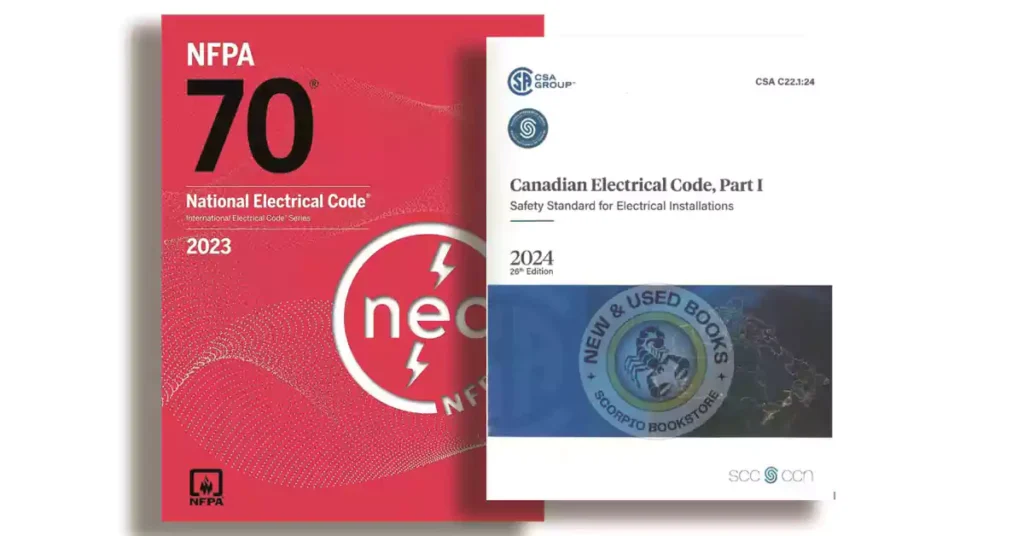
Navigating electrical installations across the United States and Canada requires a comprehensive understanding of both the 国家电气规范 (NEC) and the Canadian Electrical Code (CEC). While both codes aim to ensure safety and standardization, they exhibit distinct differences that professionals must recognize to ensure compliance in cross-border projects.
Overview of NEC and CEC
The National Electrical Code (NEC), developed by the National Fire Protection Association (NFPA), serves as the benchmark for safe electrical design, installation, and inspection in the United States. It undergoes revisions every three years to incorporate technological advancements and emerging safety concerns.
Conversely, the Canadian Electrical Code (CEC), published by the Canadian Standards Association (CSA), governs electrical installations in Canada. Similar to the NEC, the CEC is updated triennially, with its latest 26th edition released in March 2024.
8 Differences Between NEC and CEC
While both codes share foundational safety principles, several key differences exist:
Voltage and Frequency Standards
NEC: Standard residential voltage: 120/240V single-phase and 60Hz.
Three-phase systems: 208V, 240V, 480V.
CEC: Uses the same 120/240V and 60Hz standard
Three-phase systems: 120/208V, 347/600V (common in Canadian industrial settings).
Hazardous Location Classification
Both the NEC and CEC allow two classification methods for hazardous locations: Class and Division and Class and Zone. However, a key distinction is that the CEC mandates the use of the Class and Zone system for all new installations, while the NEC still permits the Class and Division system as an alternative. This shift in the CEC aligns with international IEC standards, improving compatibility with global electrical systems.
断路器限制
NEC 将单个配电盘内的过流保护装置数量限制为最多 42 个,旨在防止因突如其来的过载浪涌而导致的潜在灾难性故障。然而,CEC 并未施加此限制,因为他们相信正确安装的系统可以最大限度地降低所有断路器同时跳闸的风险。这种灵活性使得加拿大的电力系统无需额外配电盘即可实现更广泛的电力系统。
载流量表和温度降额
NEC 方法: NEC 提供了详尽的载流量表,其中分别列出了中压和低压导体的载流量。当环境温度低于参考值时,该表格还允许温度降额系数大于 1,从而提高导体载流量。
CEC 方法: CEC 简化了载流量的考量,为地上低压和中压导线提供了统一的载流量表。然而,该标准将温度降额系数限制为最大值 1,这意味着不允许在 CEC 表范围之外改进载流量。
接地和接合
NEC: 指定标准化的接地方法和材料,强调统一性和安全性。
CEC: 接地方法更加灵活,只要符合安全标准,即可适应当地惯例。这种灵活性可以降低安装成本,并适应加拿大特定的环境条件。
导管和布线方法
NEC: 为导管类型和安装方法提供更多选择,包括在某些区域使用柔性金属导管。
CEC: 对导管安装提出更严格的要求,特别是在高湿度或极端温度的地区,以确保长期耐用性和耐火性。
电弧和接地故障保护
NEC:要求所有卧室电路和某些生活空间都配备电弧故障断路器 (AFCI) 保护。
CEC: 执行类似的要求,但将 AFCI 保护扩展到其他住宅电路,包括厨房和洗衣房,以加强防火。
产品认证与批准
NEC: 接受经 UL(美国保险商实验室)或其他国家认可的测试实验室认证的设备。
CEC: 需要获得 CSA(加拿大标准协会)或同等加拿大认可的认证机构的认证。
比较表:NEC 与 CEC
比较表:NEC 与 CEC 代码
方面 | NEC(美国) | CEC(加拿大) |
电压和频率 | 120/240伏,60赫兹 | 120/240伏,60赫兹 |
危险场所 | 类别和分区或类别和区域(可选) | 类别和区域(新安装强制要求) |
断路器限制 | 每个面板最多 42 个设备 | 无限制 |
载流量 | 低压和中压分开 | 一张桌子供两人使用 |
温度降额 | 允许大于 1 | 限1 |
接地与接合 | 标准化方法 | 灵活的方法 |
电弧故障保护 | 卧室和一些起居空间 | 延伸至厨房和洗衣房 |
产品认证 | UL | 加拿大航空 |
案例研究:美加合资企业应对双重合规
一家美国承包商与一家加拿大电气工程公司合作的跨国数据中心项目面临着同时满足 NEC 和 CEC 标准的挑战。加拿大方面要求采用灵活的接地方法,并在寒冷天气环境下采用更严格的导管安装规范;而美国团队则专注于满足 NEC 的电弧故障保护和断路器限制。通过进行安装前风险评估,两团队成功集成了符合 CEC 标准的非金属导管和符合 NEC 标准的 AFCI 设备,确保同时符合两个规范,并避免了代价高昂的返工。
电气承包商和制造商的实际应用
A. 安装最佳实践
1. 符合 CEC 标准的集成管道系统
- 使用认可的材料: 符合 CEC 严格要求的源线、导管和配件,以确保合规性并提高耐用性。
- 遵循更新的接线方法: 实施最新 CEC 版本中概述的现代布线技术,以满足增加的负载需求并减少火灾危险。
- 定期培训和认证: 确保技术人员接受持续的培训和认证更新,以了解最新的 CEC 修订。
- 文件和记录保存: 保留所有安装、许可证和检查报告的详细文件,以确保符合法规并进行未来维护。
2. 使用认可的材料和方法的重要性
- 经过认证的导管和配件: 根据应用情况使用 CSA 认证的硬质 PVC 导管、EMT 或液密柔性导管。
- 正确的安装技术:保持适当的间隙并确保导管运行安全,以防止机械损坏和腐蚀。
- 定期检查和测试: 定期进行接地电阻和绝缘完整性测试。
B. 工具和资源
1. 推荐的清单和指南
电气安装 CEC 合规性检查表
导管尺寸和载流量计算工具
接地和接合最佳实践指南
2.可下载资源
符合 CEC 标准的数字清单
可快速参考 CEC 指南的移动应用程序
CSA 和其他认证机构的在线培训课程
3. 在线平台和论坛
加拿大电气承包商协会(CECA)
电气安全局 (ESA) 资源
CEC 代码更新网络研讨会
C. 现实世界的例子
1.案例研究:Delta Conduit Manufacturing
将最新的 CEC 指南融入生产流程。
安装错误减少了 15%。
由于产品安全性和耐用性增强,客户满意度也得到提高。
“通过使我们的制造流程与最新的 CEC 标准保持一致,我们不仅确保了安全,而且还获得了市场竞争优势,”Delta Conduit Manufacturing 质量保证经理 Sarah Nguyen 说道。
2. 工业制造工厂升级
使用 CSA 认证的 PVC 导管系统升级电力基础设施
实施灵活的接地方法以符合 CEC 要求。
采用先进的 AFCI 保护,增强防火性能。
3.可再生能源太阳能发电场项目
部署重型波纹管用于地下电缆布线。
集成适当的防雷接合技术。
通过符合温度的载流量计算提高效率和安全性。
D. 视频/客户评价部分
专家访谈
电气工程师讨论成功的符合 CEC 标准的项目。
CSA 认证专家对选择认可材料的见解。
承包商评价
来自实现安全改进和效率提高的承包商的推荐。
正确的导管安装和接地技术的演示。
视觉演示
管道系统安装的延时镜头。
正在进行的安全检查和测试程序。
CEC 代码的未来
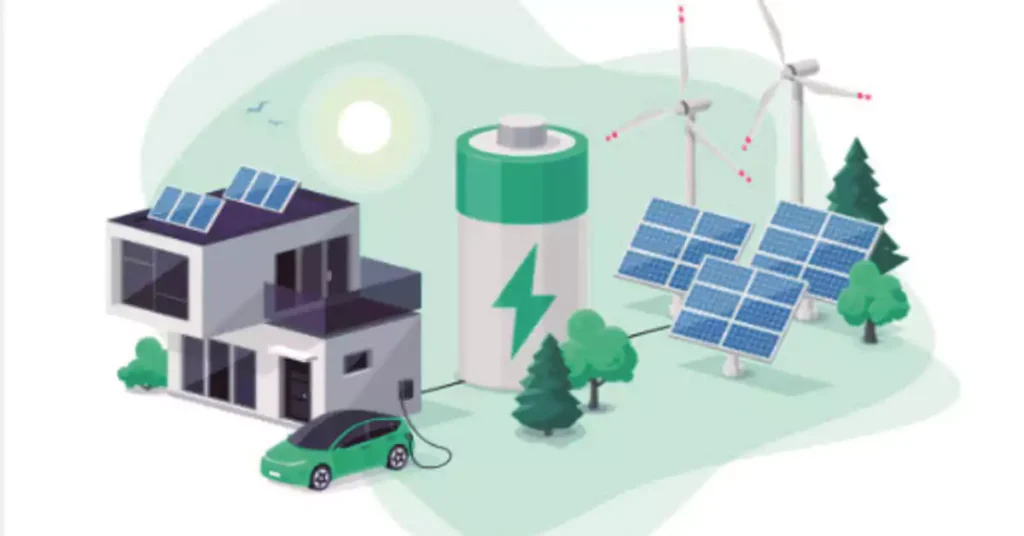
A. 产品设计
材料创新: 开发阻燃导管、低烟无卤材料和耐腐蚀涂层,以满足不断发展的 CEC 标准。
可持续解决方案: 采用环保和可回收材料来符合绿色建筑计划。
耐用性和灵活性: 改进的材料可以承受极端温度和机械应力。
可持续解决方案: 符合绿色建筑标准的环保材料。
B. 测试与认证
CSA/UL 认证流程: 确保符合耐火性、机械强度和电气绝缘的严格测试。
先进的测试设施: 利用高压实验室模拟中高压管道系统的极端条件。
持续审计和质量控制: 定期检查和材料可追溯性,以满足 CEC 不断变化的安全要求。
C. 营销优势
增强产品可信度: 在产品文档中展示 CEC 合规性。
客户保证: 通过经过验证的安全标准与承包商和最终用户建立信任。
全球市场准入: 满足出口机会的国际标准。
D. 新兴应用
电动汽车充电基础设施: 为 2 级和直流快速充电器设计高耐用性导管系统,以满足 CEC 严格的接地和接合要求。
人工智能数据中心: 实施耐火导管和先进的电缆管理解决方案,以支持高功率计算环境。
智能管道解决方案: 集成实时监控和预测性维护功能。
How Ledes Provides Safety and Compliance Solutions
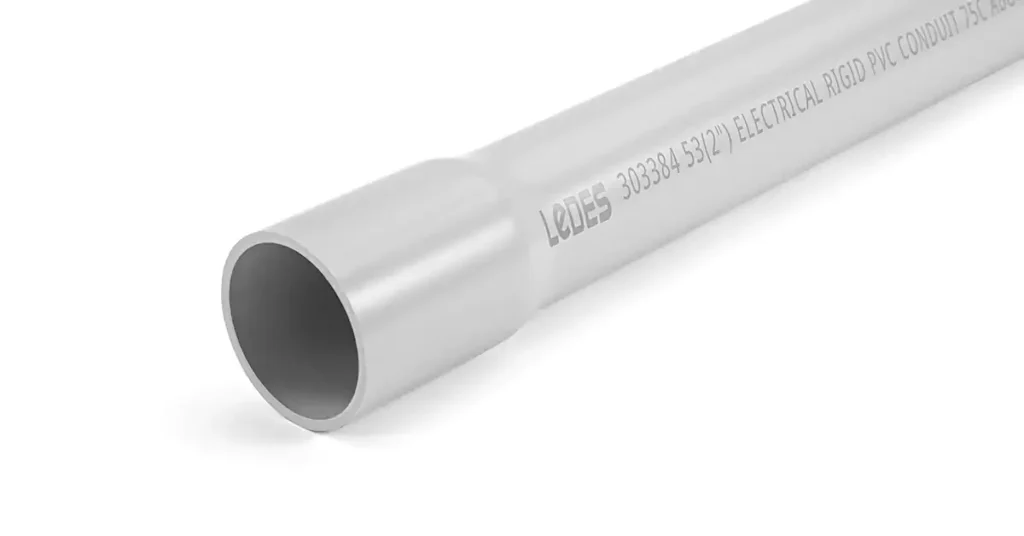
关于Ledes
Ledes is a global supplier of manufacturing electrical conduit systems and fittings that meet the highest safety and compliance standards. With a strong focus on innovation and quality, Ledes products are widely used across various industries, including renewable energy, data centers, and infrastructure projects. By adhering to both the Canadian Electrical Code (CEC) and the National Electrical Code (NEC), Ledes ensures optimal performance, durability, and safety in electrical installations.
Products that Compliant with CEC and NEC
CSA – approved rigid PVC conduit, DB2 rigid PVC conduit for direct burial applications, electrical non-metallic tubing, elbows and bends, couplings and other fittings.
UL – Listed Schedule 40 & 80 rigid PVC conduit, DB100, DB120 rigid PVC conduit, ENT, elbows, couplings, adapters, and electrical boxes such as slab boxes, wall boxes, gang boxes and conduit bodies etc.
Heavy duty and medium duty low smoke halogen free rigid conduit, corrugated conduit, fittings and electrical boxes.
Meet CEC and NEC fire safety standards.
Suitable for high-risk environments such as tunnels, transportation systems, and data centers.
Solar rigid PVC conduit, corrugated conduit, fittings and boxes.
Designed for high-voltage photovoltaic systems.
Meets both NEC grounding and bonding requirements and CEC flexibility standards.
Advantages of Ledes Products
CEC and NEC Dual Compliance: Ensuring compatibility for cross-border projects.
High Durability and Performance: Resistant to extreme temperatures, corrosion, and mechanical stress.
Advanced Fire Safety Features: LSZH materials minimize toxic emissions and prevent fire hazards.
Flexible Installation Solutions: Suitable for both aboveground and underground applications.
Sustainable and Eco-Friendly Materials: Supporting green energy initiatives and reducing carbon footprints.
Joint Projects
Metro Tunnel Project (Melbourne and Victoria, Australia)
The Metro Tunnel, formerly known as Melbourne Metro Rail (MMR), is an underground rapid transit project currently under construction in Melbourne, Victoria, Australia. The project involves the construction of twin 9-kilometre (5.6 mi) rail tunnels between South Kensington and South Yarra with five new underground stations. It aims to connect the Pakenham and Cranbourne lines with the Sunbury line, creating a new high-frequency cross-city line that bypasses Flinders Street station and the City Loop. The Metro Tunnel is equipped with high-capacity signaling and platform screen doors, a first for Melbourne.
Ledes’ Low Smoke Halogen-Free (LSZH) conduit and fittings were selected for this project to enhance fire safety and ensure durability in the challenging underground environment. These conduits provide superior protection against fire hazards and reduce toxic emissions, aligning with the project’s high safety standards.
CHPE Project (New York to Canada)
The Champlain Hudson Power Express (CHPE) is a high-voltage direct current (HVDC) underwater and underground power cable project linking Quebec to the New York City neighborhood of Astoria, Queens. Developed by Transmission Developers Inc. (TDI), a Blackstone Group portfolio company, the project aims to carry clean energy, including hydropower and wind power from eastern Canada, directly to the New York City electricity market. Construction began in 2022, with completion expected by 2026. The estimated total cost is $4.5 billion USD.
Ledes’ Schedule 40 PVC conduit and fittings were utilized in the CHPE project to protect electrical wiring and ensure long-term performance in the underground sections. The rigid PVC conduit’s durability, corrosion resistance, and compliance with NEC and CEC standards made it an ideal choice for this critical infrastructure project.
Customer Feedback
Electrical Contractors 1: “Ledes’ LSZH conduit systems significantly improved our project’s safety compliance and reduced installation time. Their products are fully certified for both Canadian and U.S. markets.”
Electrical Contractors 2: “We achieved seamless installation of solar conduits for our renewable energy project thanks to Ledes’ superior quality and compliance with CEC guidelines.”
结论
The Canadian Electrical Code (CEC) serves as a cornerstone for electrical safety and innovation in Canada. By establishing rigorous standards for electrical installations, the CEC ensures enhanced fire protection, system reliability, and energy efficiency across various sectors. From material specifications to testing and certification processes, the CEC plays a vital role in maintaining compliance and protecting lives and property. As industries evolve with the integration of electric vehicles and AI data centers, the CEC continues to adapt, driving technological advancements while prioritizing safety.
To further enhance your knowledge and compliance with the CEC, download the official CEC checklist or reach out to the Canadian Standards Association (CSA) for specialized training and certification programs.
Frequently Asked Questions (FAQs):
CEC 多久更新一次?
加拿大电气规范 (CEC) 每三年更新一次,以反映技术、安全标准和行业最佳实践的进步。最新版本是 2024 年由加拿大标准协会 (CSA) 发布的 26 版。
我的省份如何采用 CEC?
加拿大各省或地区均以各自的方式采用 CEC,通常会进行具体修订以符合当地的安全法规和环境条件。例如,不列颠哥伦比亚省执行的《不列颠哥伦比亚省电气规范》以 CEC 为基础,但由于该地区存在地震风险,因此增加了抗震安全规则。同样,魁北克省采用《魁北克建筑规范》,该规范将 CEC 标准与当地法语要求和区域电气实践相结合。
电气承包商如何确保合规?
Electrical contractors can ensure compliance with the Canadian Electrical Code (CEC) by following these steps:
- Stay Updated: Regularly review the latest version of the CEC and understand any provincial amendments.
- Obtain Proper Training: Complete CSA-certified training programs to fully understand CEC requirements.
- Use Certified Materials: Install only CEC-compliant electrical conduits, fittings, and components that meet safety standards.
- Conduct Regular Inspections: Perform thorough inspections during and after installation to ensure code compliance.
- Work with Licensed Electricians: Hire certified professionals who are familiar with the CEC and local regulations.
- Maintain Proper Documentation: Keep accurate records of installation procedures and inspection reports for future reference.
- Consult Local Authorities: Communicate with electrical inspectors or regulatory bodies for clarification on specific code requirements.


